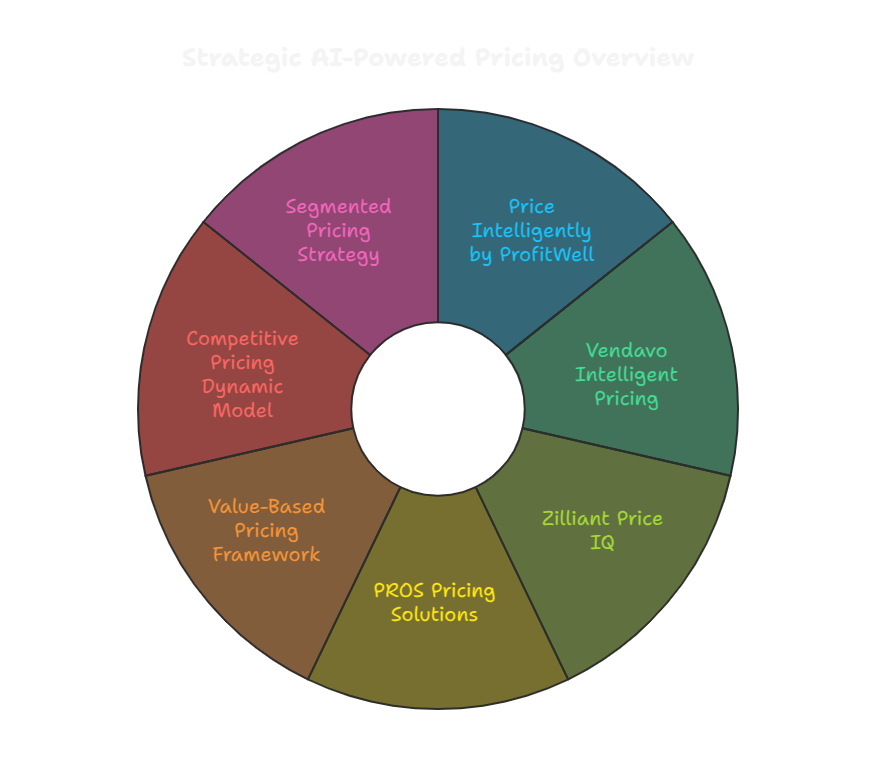What if you could predict your market's pricing sweet spot with 95% accuracy before launching a single product? Recent studies reveal that B2B technology companies leveraging AI-driven pricing strategies are experiencing revenue increases of up to 25% while reducing pricing iteration cycles by over 60%.
Go-to-market professionals understand the high-stakes challenge: pricing isn't just about numbers—it's about strategic positioning, customer perception, and competitive differentiation. Traditional pricing methods are increasingly inadequate in a rapidly evolving digital marketplace where customers demand precision, transparency, and value alignment.
The complexity of crafting compelling offers that simultaneously attract customers and protect profit margins has never been more daunting. Misaligned pricing can result in lost opportunities, reduced market share, and diminished customer trust. An AI-powered offer builder represents more than a technological upgrade—it's a strategic transformative tool that empowers businesses to make data-driven pricing decisions with unprecedented speed and accuracy.
An AI-powered offer builder is a sophisticated technology platform that transforms pricing strategy from a manual, intuition-based process to a data-driven, precision-engineered approach. At its core, this intelligent system analyzes complex market data, customer behaviors, competitive landscapes, and historical pricing performance to generate optimized pricing configurations in real-time.
For go-to-market professionals, this technology represents a strategic breakthrough. Traditional pricing methods rely on retrospective analysis and generalized market insights, which often lag behind rapidly changing customer expectations. By contrast, an AI-powered offer builder dynamically synthesizes multiple data streams—including customer segmentation, willingness to pay, competitive pricing, and value perception—to create pricing models that are both competitive and profitable.
The strategic importance lies in its ability to minimize pricing risks while maximizing revenue potential. B2B technology companies can now configure offers that precisely match market demand, adjust pricing instantaneously, and create personalized pricing strategies that resonate with specific customer segments, ultimately transforming pricing from a static constraint to a dynamic competitive advantage.
For B2B technology companies and SMBs, the AI-powered offer builder isn't just a technological upgrade—it's a strategic survival tool in an increasingly complex market ecosystem. Market research indicates that businesses using advanced pricing intelligence gain a 15-20% competitive edge in customer acquisition and retention.
Most businesses falter by relying on outdated pricing approaches that fail to capture market complexity. Typical errors include:
By embracing AI-driven pricing intelligence, businesses transform these potential pitfalls into strategic opportunities for growth and market differentiation.

Transforming your pricing strategy requires a structured approach that bridges technological capability with strategic execution. Here's a comprehensive guide to effectively implementing an AI-powered offer builder.
Begin by consolidating your critical business data from multiple sources. This includes historical pricing records, customer interaction data, market competitive intelligence, and detailed product performance metrics.
Leverage AI capabilities to develop granular customer segments based on purchasing behaviors, value perception, and price sensitivity. This enables hyper-personalized pricing strategies that resonate with specific market groups.
Configure your AI offer builder to continuously monitor competitive pricing, market trends, and emerging pricing strategies. Real-time intelligence allows for dynamic pricing adjustments that maintain your competitive edge.
Design flexible pricing models that can rapidly adapt to market signals. Utilize AI-driven predictive analytics to simulate multiple pricing scenarios and identify optimal price points that balance customer attraction and profitability.
Establish a robust feedback loop that continuously evaluates pricing strategy effectiveness. Use AI-generated insights to refine and optimize your offer builder's performance over time.
By methodically implementing these steps, B2B technology companies can transform their pricing approach from reactive to strategically proactive.

Implementing an AI-powered offer builder requires strategic tools and proven frameworks that enable precise pricing intelligence and market adaptation.
Price Intelligently by ProfitWell
A comprehensive pricing analytics platform that uses machine learning to analyze customer willingness to pay, segment pricing strategies, and provide real-time market insights. Ideal for B2B technology companies seeking data-driven pricing optimization.
Vendavo Intelligent Pricing
An enterprise-grade solution that combines AI and advanced analytics to help businesses develop dynamic pricing strategies. Features include margin optimization, competitive benchmarking, and predictive pricing recommendations.
Zilliant Price IQ
Specializes in complex B2B pricing scenarios, offering machine learning algorithms that can process massive datasets to generate precise pricing recommendations across diverse product portfolios and market segments.
PROS Pricing Solutions
Provides AI-powered pricing software that enables real-time price optimization, personalized offer generation, and comprehensive market analysis for enterprise-level organizations.
Value-Based Pricing Framework
Focuses on pricing products based on the perceived value to customers rather than traditional cost-plus methodologies. AI tools enhance this framework by providing deeper insights into customer value perception and willingness to pay.
Competitive Pricing Dynamic Model
A flexible approach that continuously adapts pricing strategies in response to competitive market movements. AI-powered offer builders excel at supporting this framework through real-time competitive intelligence and predictive analytics.
Segmented Pricing Strategy
Develops nuanced pricing approaches tailored to specific customer segments. AI technologies enable granular segmentation analysis, allowing businesses to create hyper-personalized pricing models that maximize revenue potential.
By strategically combining advanced tools and recognized frameworks, B2B technology companies can develop robust, intelligent pricing strategies that drive competitive advantage and sustainable growth.
By leveraging an AI-powered offer builder, B2B technology companies can transform their pricing strategies from static, intuition-based approaches to dynamic, data-driven optimization processes. The integration of advanced analytics, machine learning algorithms, and real-time market insights enables pricing professionals to move beyond traditional segmentation and develop highly personalized, competitive pricing models that adapt instantly to market fluctuations. This technological approach not only enhances revenue potential but also provides a critical competitive edge by enabling faster decision-making, reducing pricing errors, and creating more sophisticated value-based pricing strategies that align precisely with customer expectations and market dynamics. As the competitive landscape becomes increasingly complex, adopting AI-driven pricing tools is no longer a luxury but a strategic imperative for organizations seeking to maximize their market positioning and financial performance.